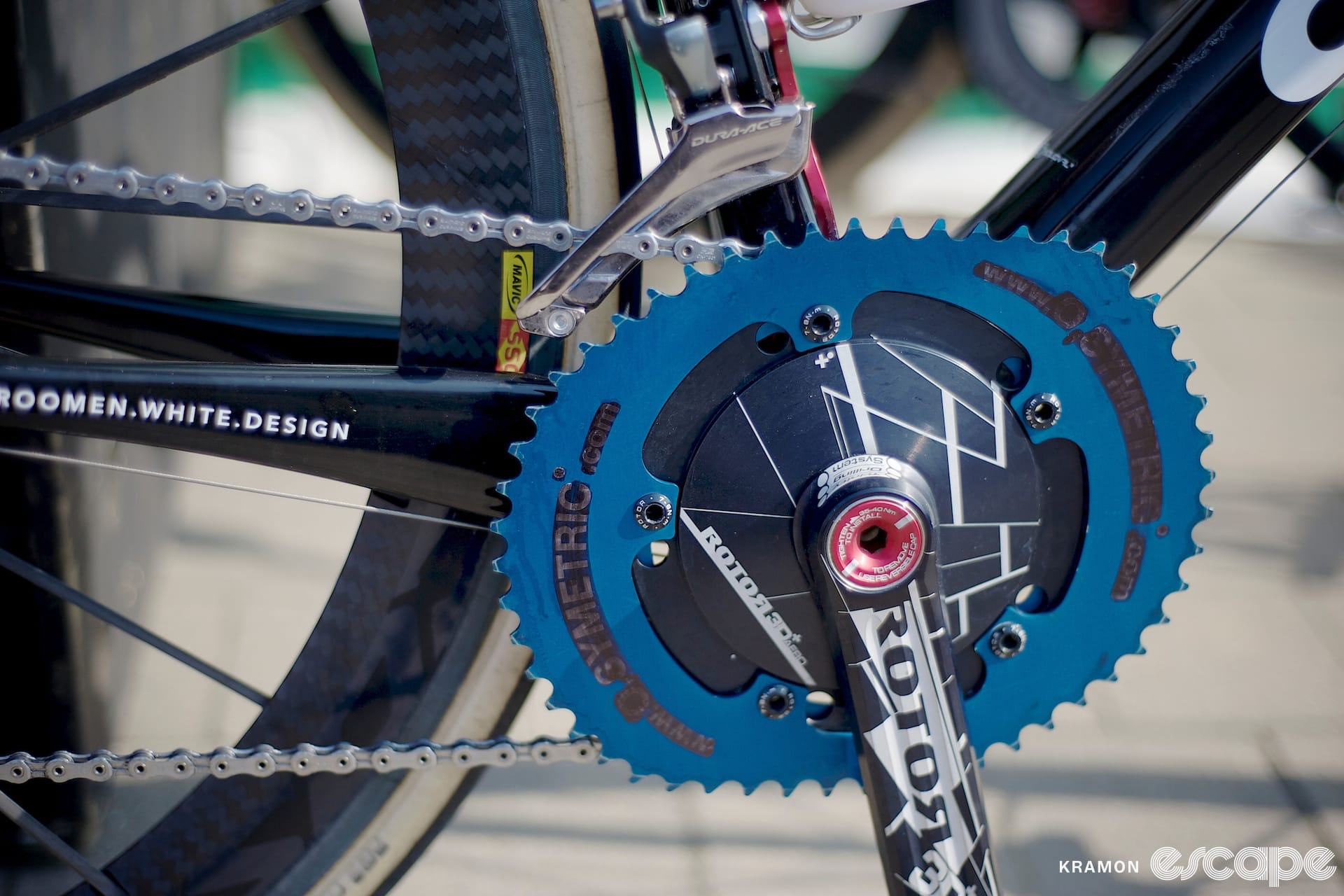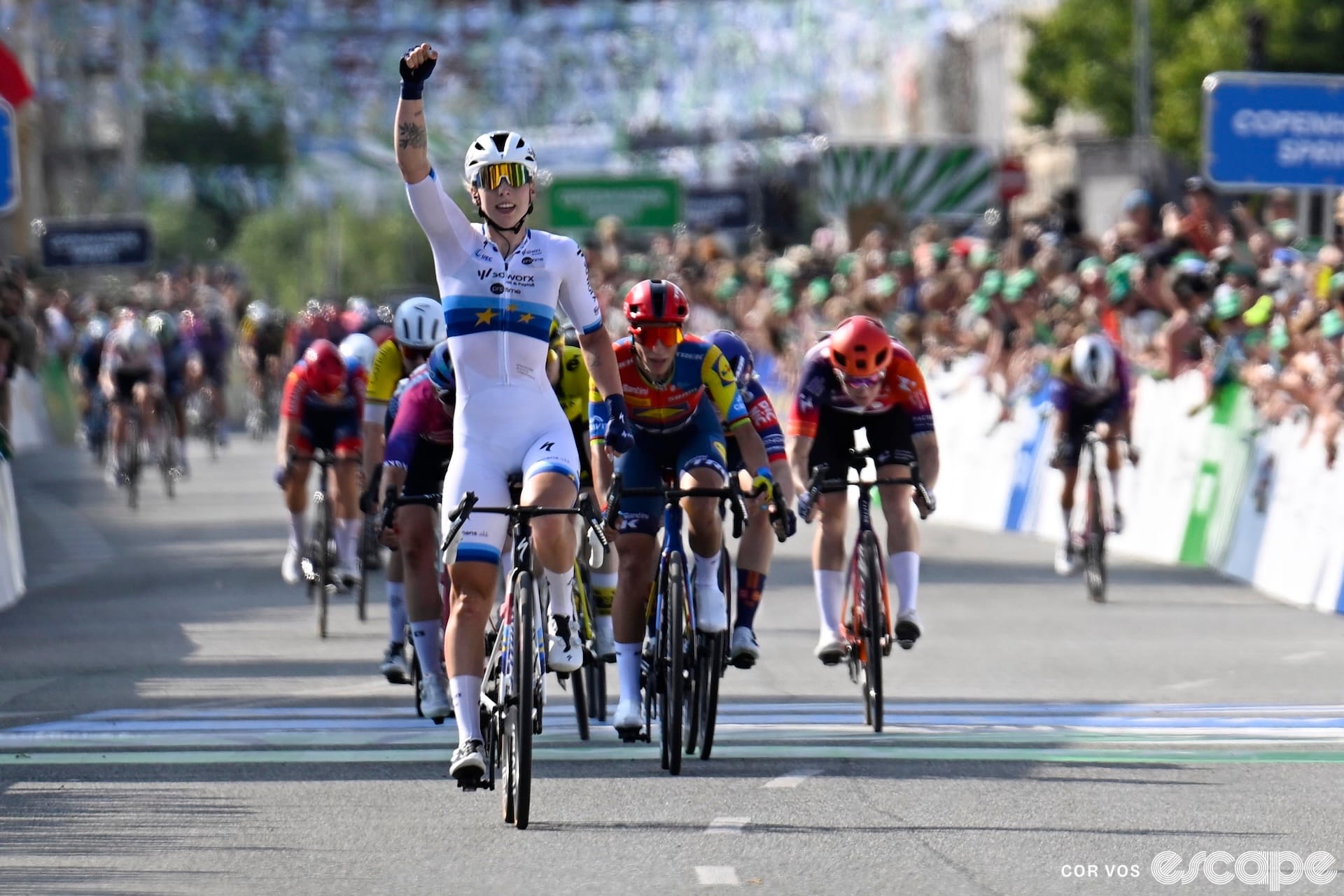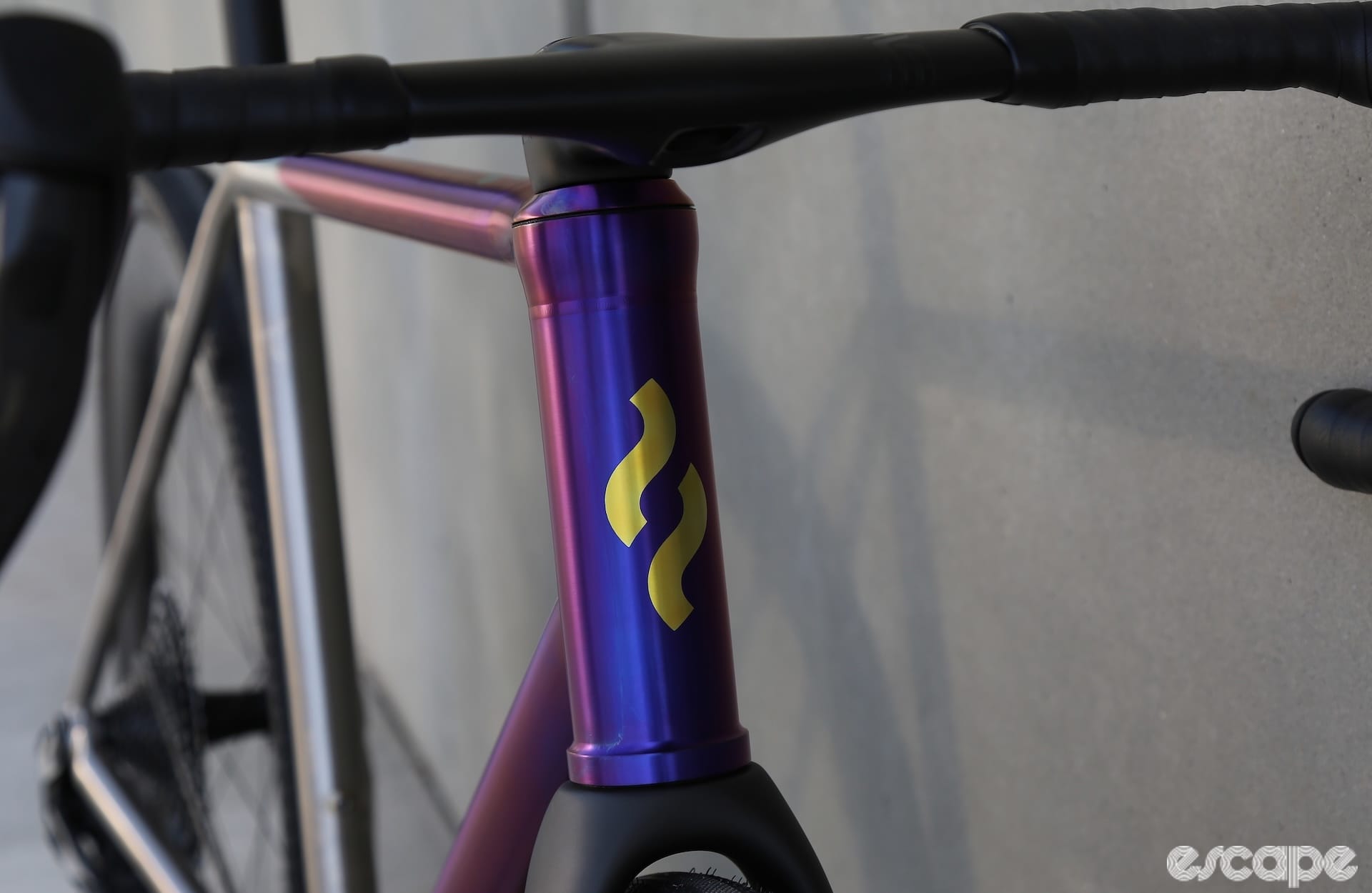March is well underway and Paris-Nice and Tirreno-Adriatico are in the rearview mirror, which can only mean that it is almost time for Milan-San Remo. This Saturday, the peloton will embark on the (very) long journey from Pavia (close-ish to Milan) to San Remo, where a huge prize awaits: the chance to win the first Monument of the 2024 season.
Once a reliable opportunity for the sprinters to take a big victory, Milan-San Remo has evolved into an event where bold attackers are often rewarded for their efforts. In other words, a wide array of riders with different sorts of skillsets can shine here. With that in mind, plenty of big names are set to take on the challenge in what should be a very open race.
Here's the preview with everything you need to know about the 2024 edition of Milan-San Remo.
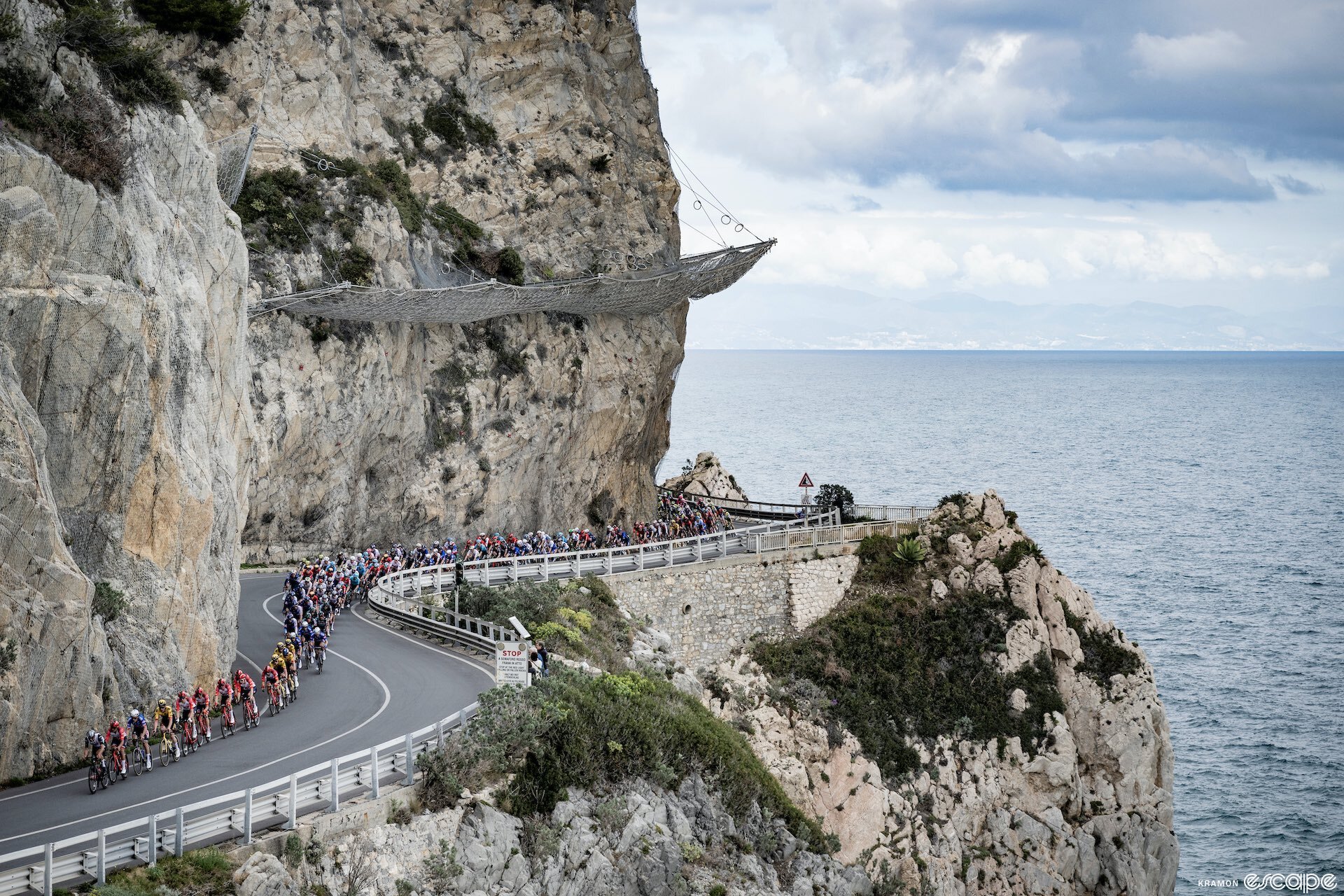
The route: Some changes to the start but a familiar finish
The 2024 edition of Milan-San Remo gets some tweaks to the route in the early going, but none are likely to have a major impact on the final outcome after a total of 288 km. That's modestly shorter than other recent editions, but in a bid to reduce the lengthy neutral start – which is in addition to the official distance – through the streets of Milan's growing urban footprint, promoter RCS has started looking at smaller satellite suburbs for the depart. After starting in Abbiategrasso (some 25 km east/southeast of central Milan) last year, for 2024 the race will start in Pavia, 45 km south of the city center. From there, however, the peloton will make its traditional way towards the Mediterranean coast and the familiar challenges that have defined this race for years.
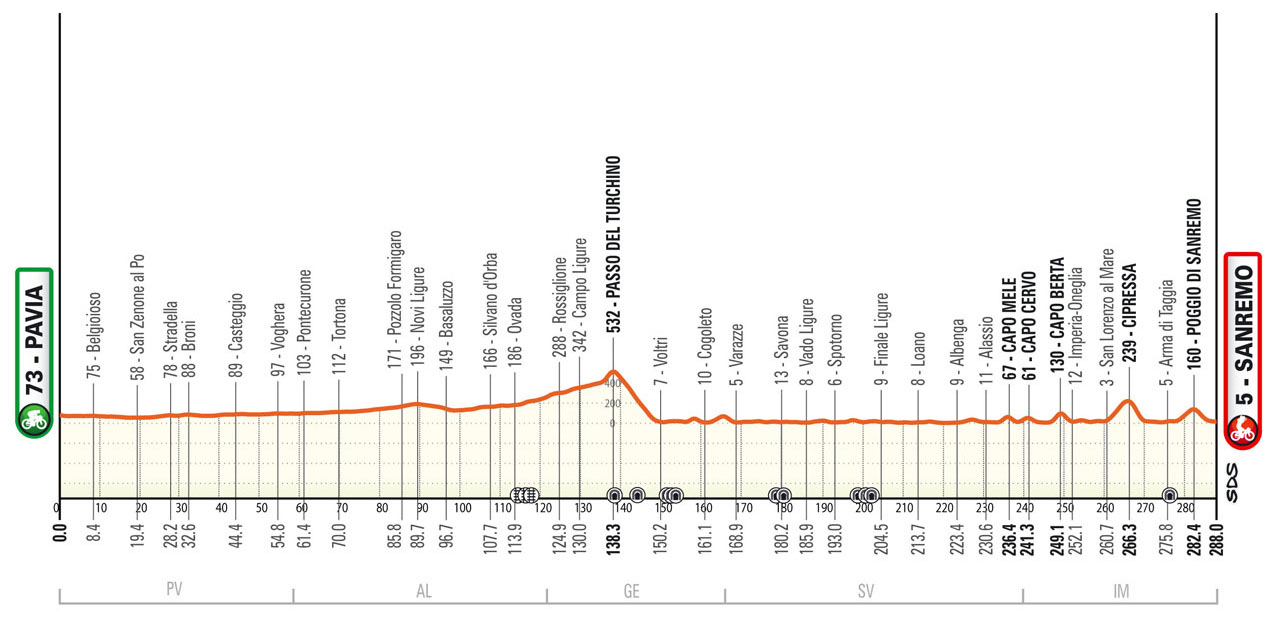
We'll keep this short because there's a pretty good chance you're well aware of what's to come on Saturday by this point. Things are quite flat until the Passo del Turchino near the midway point of the race, and then they mostly flat from there until the "Tre Capi," three small hills that start with the Capo Mele at a little over 50 km to go. The pack will be granted a brief respite after the last of those hills, but then it's onto the Cipressa, 5.6 km in length at an average gradient of 4.1 percent.
That tops out a little under 22 km from the finish line, far enough that it's an unlikely launching pad. The last major challenge is the Poggio, 3.7 km at 3.7 percent. From the top, it's under 6 km to the line, and more than half of that is downhill. The finish flattens out on the iconic Via Roma, which has hosted many a sprint in years past, but not so often recently.
The stars and the storylines
Here's how we see the (very long) list of contenders and the narratives that will define the first Monument of the season.
The favorites
⭐⭐⭐⭐⭐: Mathieu van der Poel
⭐⭐⭐⭐: Tadej Pogačar, Mads Pedersen, Christophe Laporte
⭐⭐⭐: Filippo Ganna, Matej Mohorič, Jasper Stuyven, Jasper Philipsen, Tom Pidcock
⭐⭐: Jonathan Milan, Caleb Ewan, Olav Kooij, Binian Girmay, Matteo Trentin, Marc Hirschi, Toms Skujiņš
⭐: Michael Matthews, Julian Alaphilippe, Kasper Asgreen, Alberto Bettiol, Corbin Strong, Arnaud Démare, Michal Kwiatkowski, Alexander Kristoff, Jhonatan Narváez, Maxim Van Gils, Axel Zingle, Søren Wærenskjold, Alexey Lutsenko
Will Mathieu van der Poel be at his best in his season debut?
Given how good the defending San Remo and world champion can be when he is in-form, Mathieu van der Poel (Alpecin-Deceuninck) seems like the obvious place to start here. As if his propensity to run hot and cold didn't always raise question marks, Van der Poel will be making his season debut on Saturday. Van der Poel had a busy cyclocross season, but Saturday will mark his first road race in exactly six months, since his win at last September's Super 8 Classic. Will he be in the sort of form that has propelled him to four Monuments and a rainbow jersey?
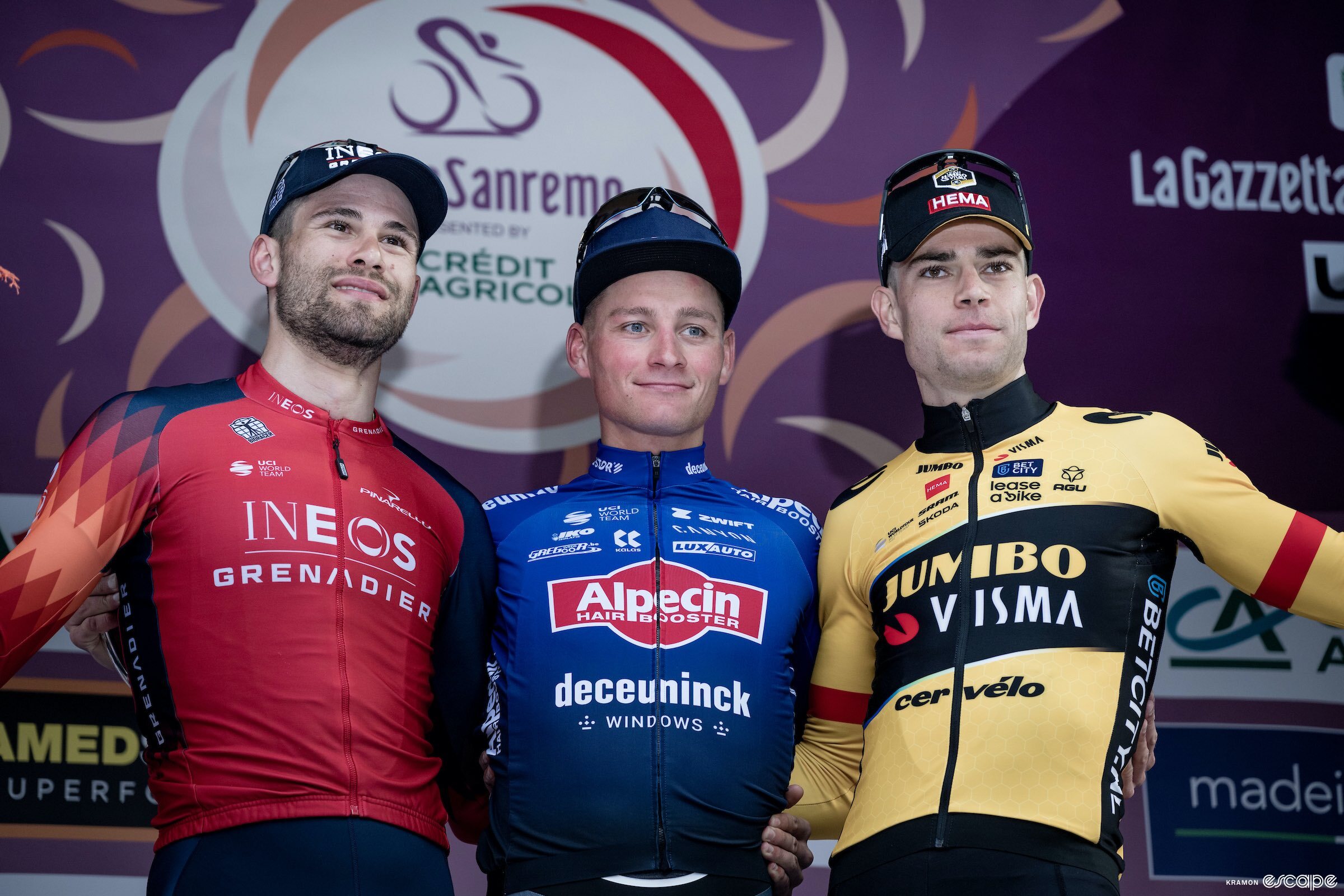
Only time will tell. The Poggio's length makes it an ideal challenge for Van der Poel, who can put the hammer down for short stretches better than maybe anyone in the world – when he is in form. If he is, he has a legitimate chance to become the first repeat Milan-San Remo champion since Erik Zabel (2000-2001), either by putting in a late attack or by following others and then beating the rest of the big names in a sprint. That said, Van der Poel's goals are many, and there's a real chance that he would rather not be at his best this early.
Is the Poggio hard enough for Tadej Pogačar?
This has been a major question for both of the past two editions of this race. Tadej Pogačar (UAE-Team Emirates) has shown a clear interest in adding a Milan-San Remo victory to his résumé, and he was absolutely imperious at Strade Bianche. The Poggio could be his next big launching pad – but does its 3.7 percent average gradient really suit Pogačar?
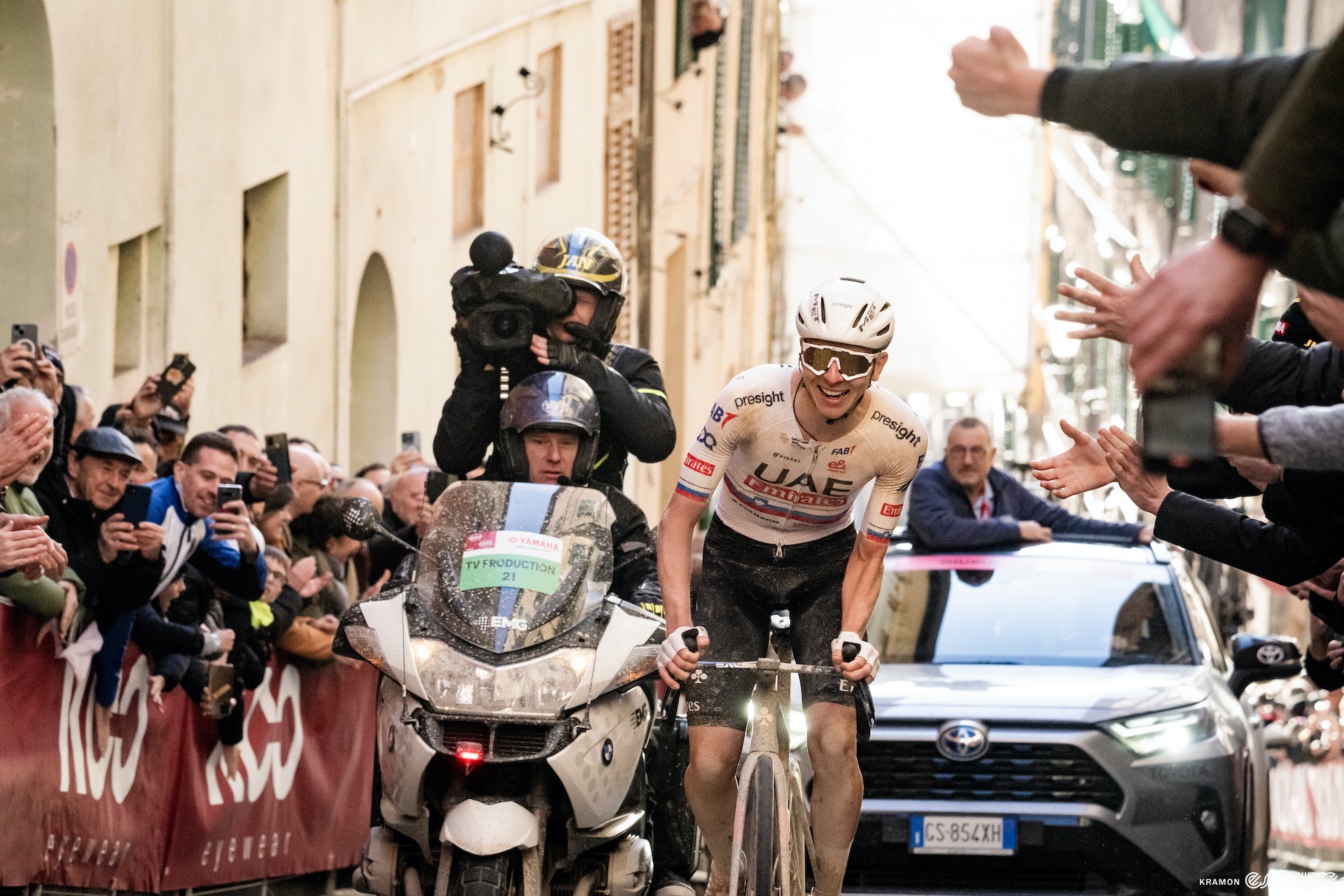
Sure, there is an 8 percent section near the top, and even a small climb is much harder at the end of nearly 300 km, but the fact remains that it is very, very difficult to get away on the Poggio. That hasn't stopped people from doing it recently, but Van der Poel and Matej Mohorič before him are different sorts of riders. If Pogačar can drop the field on the run-in to the Via Roma, it will be a truly impressive feat. Then again, this is the guy who became the first former Tour de France winner since Eddy Merckx to win the Tour of Flanders. Nothing is impossible.
Who would win a reduced sprint?
The solo artists have shined at Milan-San Remo recently, but the route leaves plenty of room for a reduced sprint where interesting things can happen, like when Julian Alaphilippe and Oliver Naesen finished first and second in a group that included Peter Sagan and Wout van Aert in 2019. (Normal rules of sprinting don't apply as well with almost 300 km in the legs.) If no one manages to get away solo on the Poggio, it could come down to a small group, where the likes of Van der Poel, Christophe Laporte (Visma-Lease a Bike's top option with former winner Van Aert absent), and Lidl-Trek's Mads Pedersen and 2021 M-SR winner Jasper Stuyven could vie for victory out of a small group of survivors.
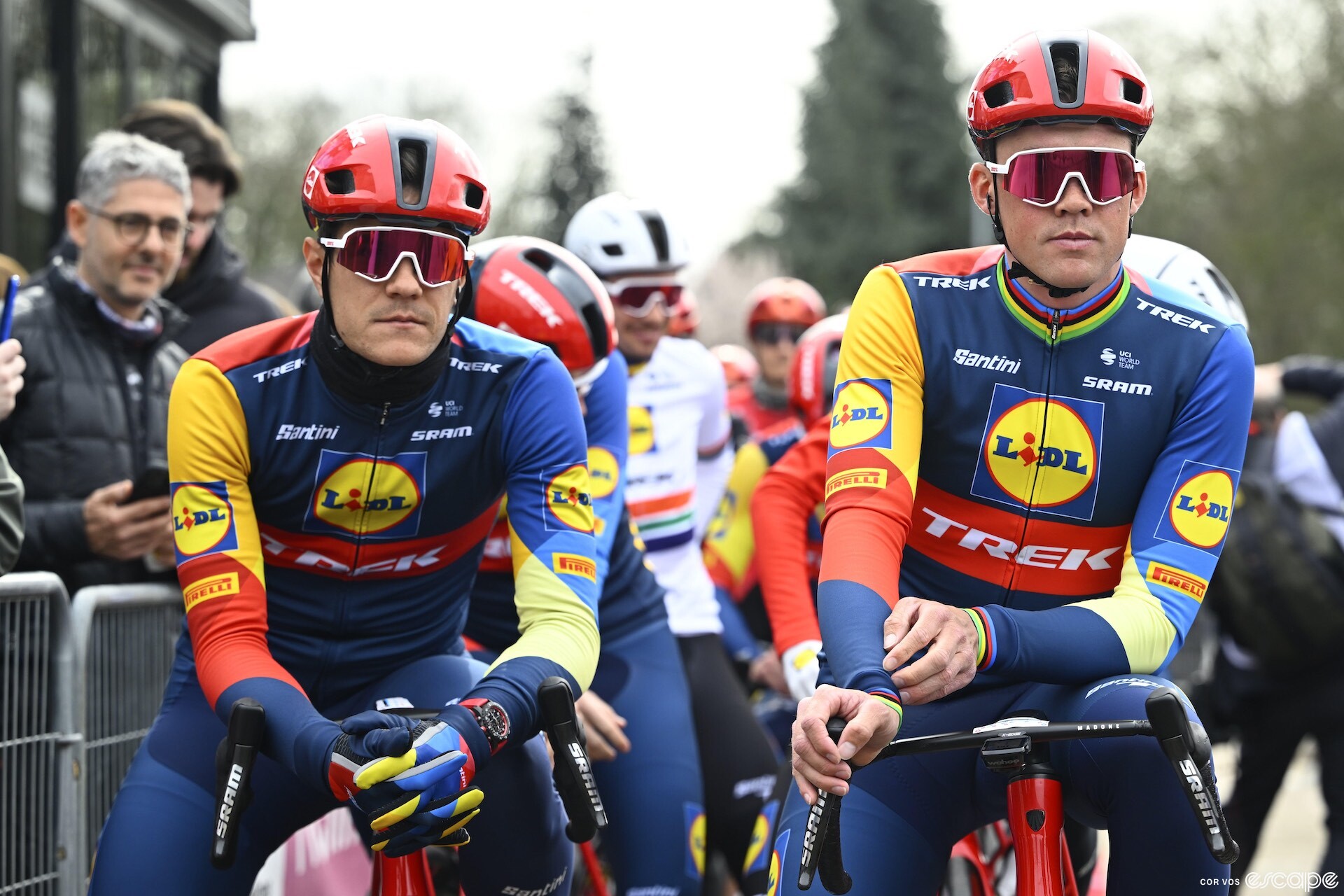
Should that happen, it's anyone's guess which of the Classics-stars-with-fast-finishes will come out on top. For one thing, we just haven't had that many opportunities lately to see those sorts of riders prove their speed in a sprint lately, and more importantly, things are extremely unpredictable on the Via Roma after such a long day.
Can the erstwhile "sprinter's classic" actually end in a bunch sprint?
There was a time not that long ago when a field sprint at San Remo was not only possible, but expected. It was the norm until about 2017. It has not happened since, but there have been times where it was pretty darn close, as two-time runner-up Caleb Ewan (Jayo-AlUla) can attest. Will 2024 be the year?
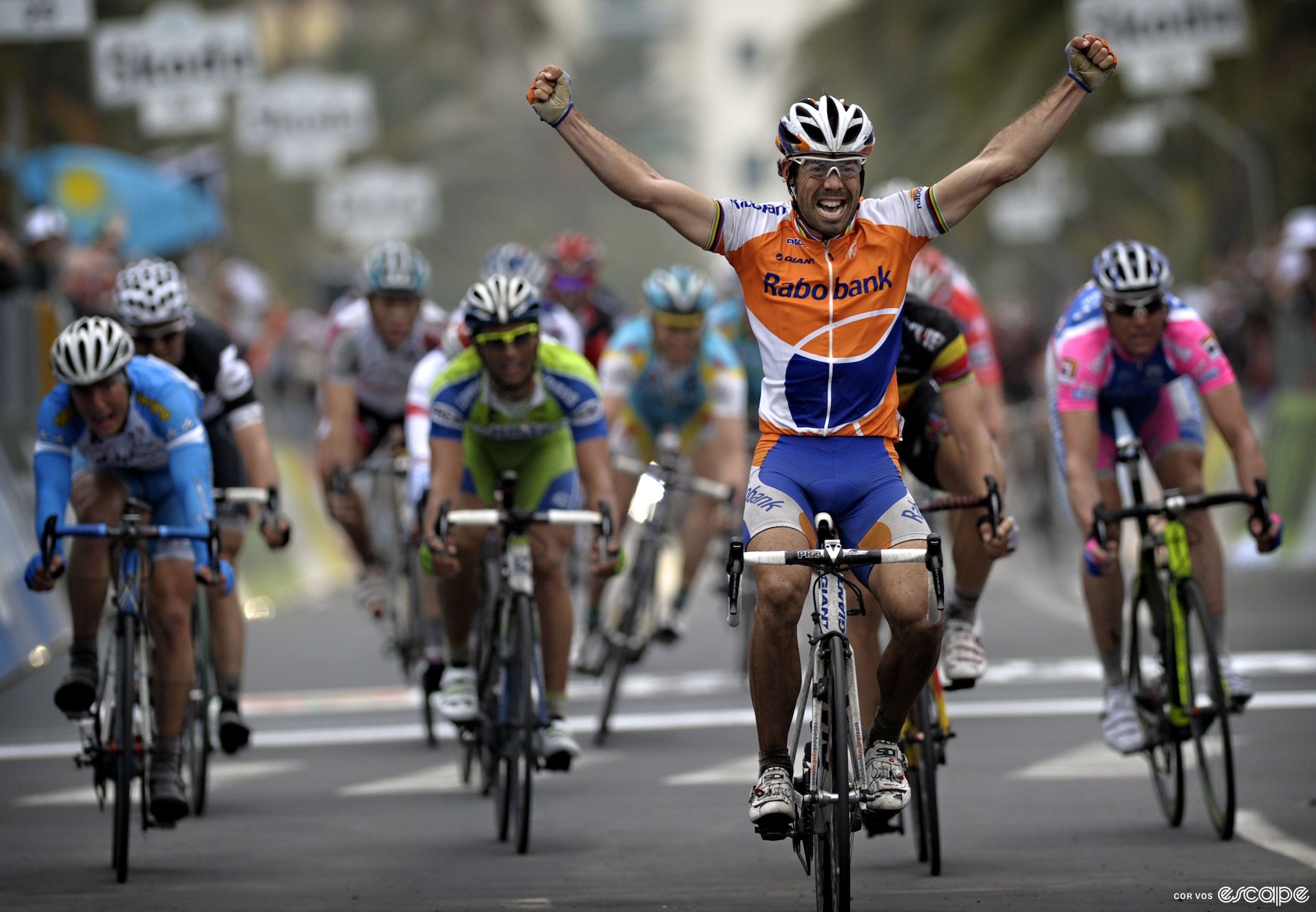
There are some reasons to think it could be. If Van der Poel is indeed not at his best in mid-March and if enough teams decide to put in the work to close down Pogačar or anyone else who attempts to go solo, the purer sprinters will have a real shot. Jasper Philipsen (Alpecin-Deceuninck) and Jonathan Milan (Lidl-Trek) are the two top names for that scenario. Ewan is another, although it has been a bit since he has been in the mix with the best. On the other end of the spectrum, Olav Kooij (Visma-Lease a Bike) is flying right now but has never done a race this long. For any of those riders or the others who tend to focus on bunch kicks, a Milan-San Remo win would be a huge feather in the cap, as the success of late attackers has put any hope of a Monument win out of reach for the sprinters in recent years.
Can an outsider stun the field?
None of the recent winners at Milan-San Remo have been all that under-the-radar, but Mohorič was not among the top favorites in 2022, and Gerald Ciolek was a true outsider back in 2013. With all eyes on the likes of Pogačar and Van der Poel or the possibility of a sprint, can someone flying under the radar get clear on the Poggio (or even the Cipressa)?
Obviously, we'll only know on Saturday, but if it does happen, there are a few riders who stand out as potential dark horse attackers. Lidl-Trek can comfortably send Toms Skujiņš up the road knowing that any or all of Stuyven, Pedersen, and Milan could follow wheels and contend in a sprint. Uno-X has ridden very aggressively recently and has nearly found success on a handful of occasions in big races with the likes of Søren Wærenskjold, to say nothing of the former winner in the team in Kristoff. Maxim Van Gils of Lotto Dstny, Jhonatan Narváez of Ineos Grenadiers, and Axel Zingle of Cofidis are other longer shots who seem poised to take a big step forward sooner or later.
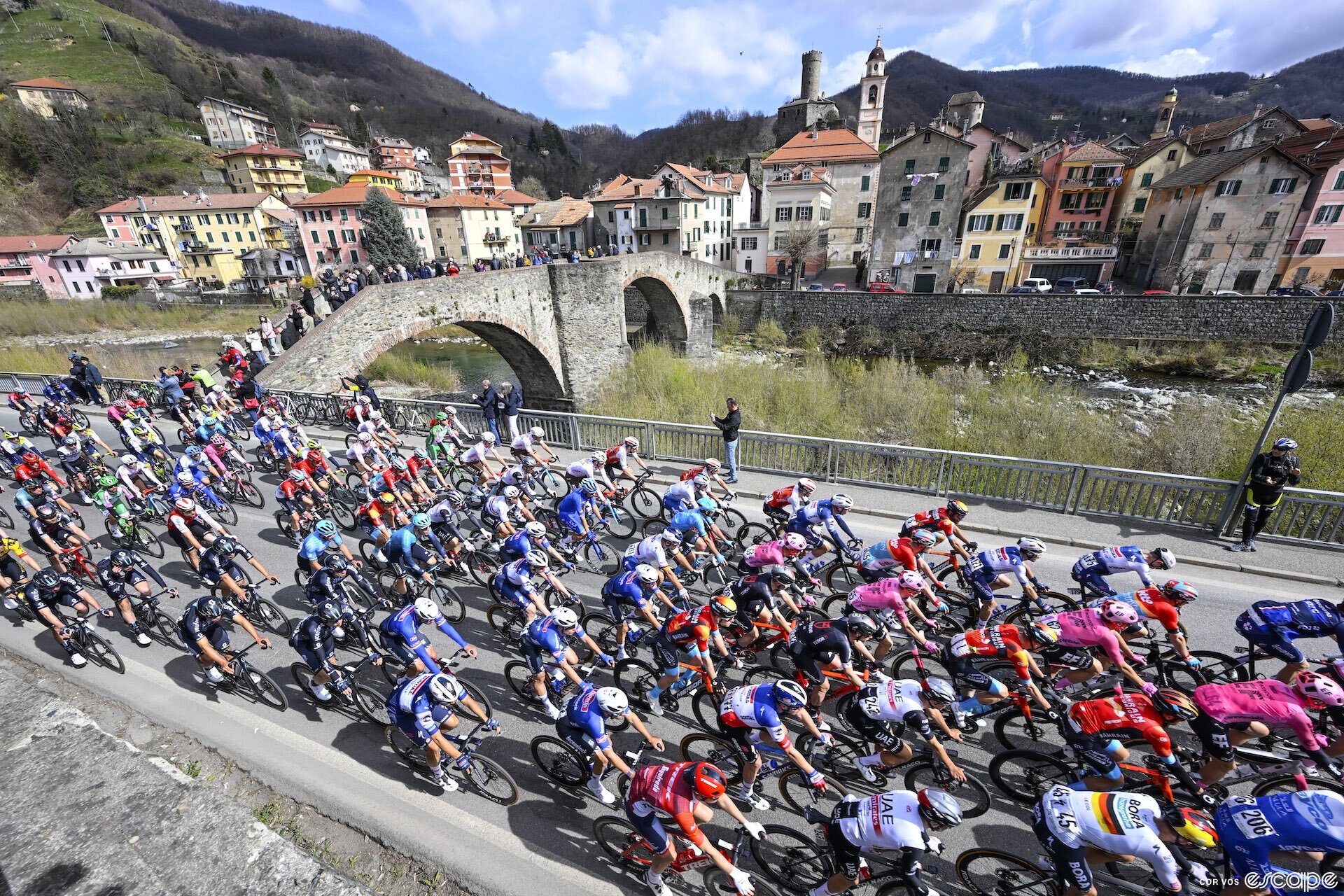
When to watch
Milan-San Remo gets underway with a neutral start at 10 am local time (5 am ET/9 am GMT/8 pm AEDT). As anyone who has watched this race before will know, it will be a long time from then until things start to get particularly spicy at this race. If you're pressed for time you can probably tune in for the run-in to the Cipressa at around 4:15 pm local time (11:15 am ET/3:15 pm GMT/2:15 am AEDT). The Via Roma finish is expected at around 5 pm local time (12:00 pm ET/4 pm GMT/3 am AEDT).
Streaming coverage: 🇬🇧Discovery+, 🇺🇸Max, 🇨🇦FloBikes, 🇦🇺SBS
Weather forecast: While Milan-San Remo has had WEATHER in past years, the 2024 edition will be all about the racers defining the action. The forecast calls for partly cloudy skies, temperatures around 50-60°F/10-15°C, and light winds out of the east/southeast. There will be no repeat of the wild 2013 edition.
What you didn't know you need to know
In last year's preview, we told you about the Roman and medieval pasts of both Milan and San Remo. Those fun facts haven't changed (and probably won't any time soon), so check them out if you haven't, and we'll shift our focus here. First, an intriguing geology note. As the folks over at Geo-Sports.org explain, after the Passo del Turchino, the peloton will roll into what geologists call the Voltri Massif, which was once submerged in an ocean that formed during the late Jurassic period. Although the oceanic plate beneath the surface shifted, some of the mantle rock from the oceanic plate is visible today. These rare rock formations are called ophiolites.
For something more modern: Did you know that San Remo hosts a massive music festival? It's officially the Italian Song Festival, generally called the Sanremo Music Festival, and it is a televised song competition like the well-known Eurovision – except that it's older than Eurovision and was in fact the inspiration for the creation of the pan-European competition. It has been around since 1951 and over the years it has hosted a long list of stars, from Louis Armstrong to Total Eclipse of the Heart singer Bonnie Tyler. The festival is usually held in mid-February, making the last weeks of winter and the start of spring a busy time on the Ligurian coast!
Did we do a good job with this story?



